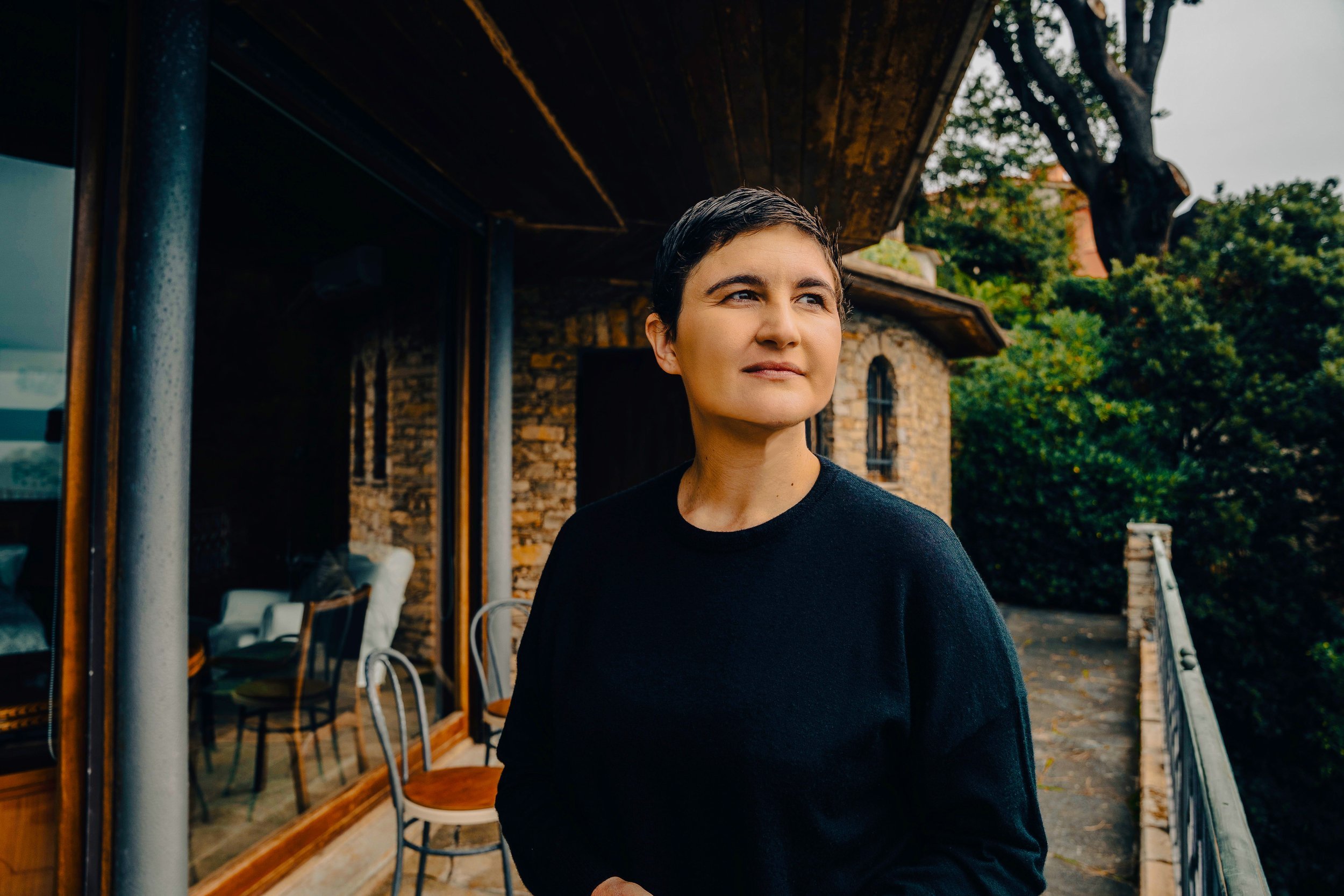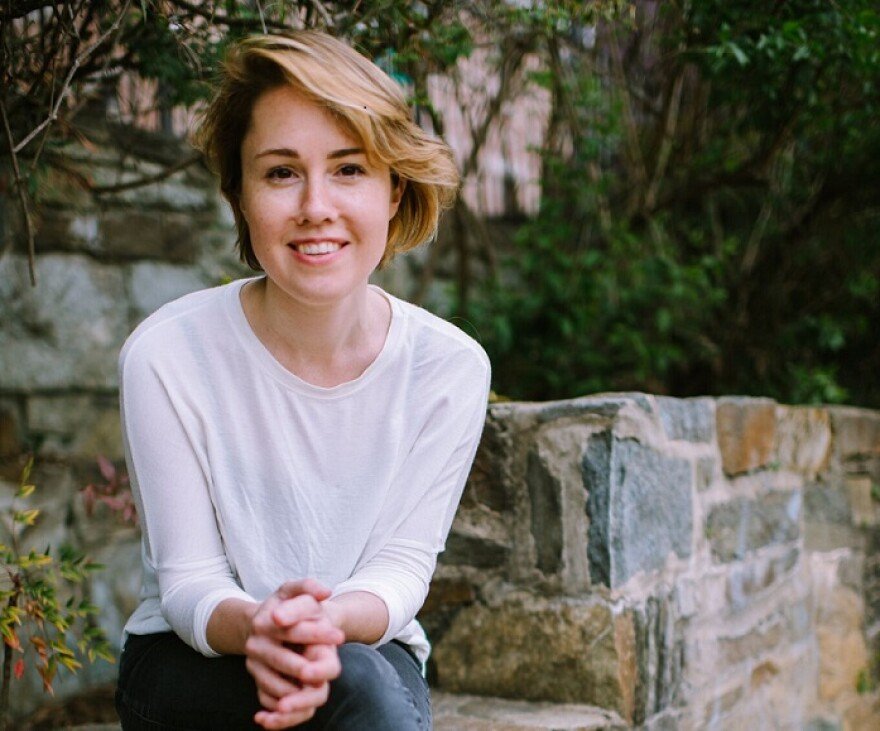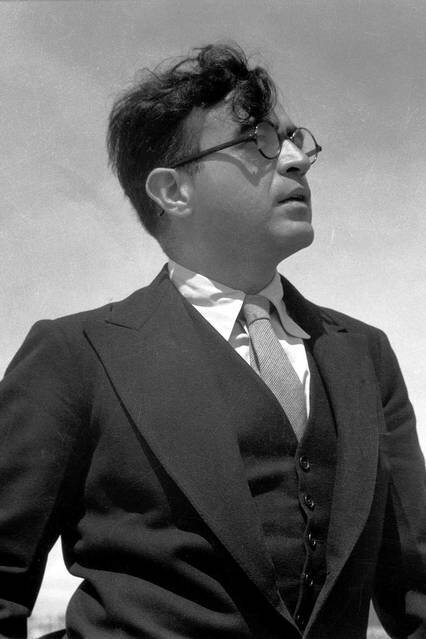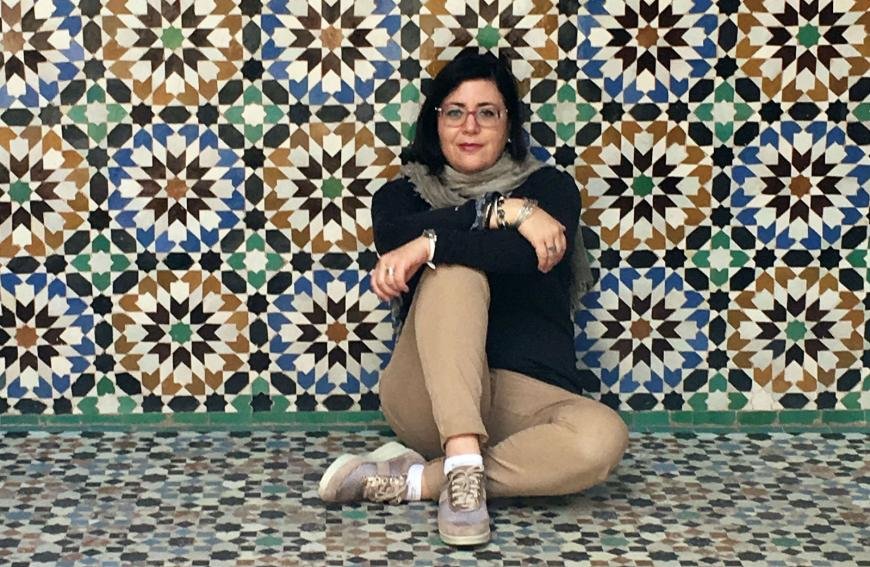For an especially immersive program at the McNay Art Museum, Agarita will perform throughout the museum among the galleries, providing the unique opportunity to understand the art collections in a new way. Visual themes will be paired organically with musical selections, offering an eye- and ear-opening experience.
Museum Map
FOR A FULL LIST OF OUR SUPPORTERS CLICK ON THE LINK BELOW.
FEATURING
Ye Jin Min is a third-year Violin Fellow at the New World Symphony and a doctor of musical arts candidate at Yale School of Music. Born and raised in South Korea, she completed her undergraduate studies in Australia at the Sydney Conservatorium under Professor Goetz Richter and a master’s degree at Yale University with Professor Syoko Aki, where she received the Yale Alumni award. She also spent a year in Germany, receiving tutelage from Professor Ulf Hoelscher.
Ye Jin has performed extensively as a soloist, chamber and orchestral musician. She has performed in the U.S., Germany, Australia, Austria, Switzerland, Thailand and South Korea. Most recently, she was a fellow for Davos Music Festival 2022, Sarasota Music Festival 2022 and Bowdoin International Music Festival 2021. While in Australia, she was a member of the Sydney Symphony‘s Sinfonia Orchestra. She also was a first prize winner of the Kendall National Violin Competition and Animato International Violin Competition.
Ye Jin is passionate about performing contemporary and 20-century music and music by underrepresented composers. Her doctoral thesis is about Australian violinist Alma Moodie and music dedicated to her, including the works of Max Reger, Ernst Krenek and Eduard Erdmann. She participated in various concerts and projects, including a concert with Caroline Shaw and Gabriele Kahane, recording music of Ulysses Kay and Louise Farrenc for New Muses Project and also has her own project ‘Re:present.’ Ye Jin occasionally composes as well, and most recently she premiered her Hymn for Violin and Cello in St. Theodul Kirche during Davos Music Festival 2022.
PROGRAM NOTES
Italian composer Antonio Vivaldi is best known for his work The Four Seasons, which illustrate through music some of the feelings associated with each season of the year. Composed around 1720, they are some of the first examples of “program music,” or music that evokes a narrative, image, or scene rather than music that entirely “speaks for itself” without any extra-musical evocation. In Winter, the listener can imagine a fierce snowfall, and the urgency and concern that comes with it. A constant beat and tremolos in the strings depict a persistent snowfall, and virtuosic cadenzas from the first violin heighten the emotional intensity. Along with each season, Vivaldi included a sonnet (possibly written by the composer himself) that evoked the season’s spirit. For Winter, he includes the following:
We tread the icy path slowly and cautiously,
for fear of tripping and falling.
Then turn abruptly, slip, crash on the ground and,
rising, hasten on across the ice lest it cracks up.
We feel the chill north winds course through the home
despite the locked and bolted doors...
this is winter, which nonetheless
brings its own delights.
Ko’u inoa (“my name is”) is a work for solo violin by Kanaka Maoli composer Leilehua Lanzilotti that is described as “a homesick bariolage based on the anthem Hawai'i Aloha.” Bariolage is the fast bow technique that persists throughout the piece, allowing for rapid arpeggios that create a unique harmonic color and texture. The work has a minimalist quality, evoking a trance-like meditation over a long stretch of consistent texture. Gradually, the listener is drawn to an emotional state that is unifying, connective, and deep within – the repetition and harmonic changes are like a mantra, and draw our attention to something universal and simple, like infinite waves, or the in-and-out of our breath. Gentle singing by the violinist toward the end of the piece imbues the work with deeper vulnerability.
The solo violin work Four Moons by Ye Jin Min was composed for a performance with the Koriobots, a choreographed robot by Dr. Madeline Gannon. It premiered at Knight Foundation’s Art and Technology conference Catalyst 2023. Inspired by the four floating white discs of the robot, the piece narrates the story of four moons and a girl through a combination of voice and violin. For its performance inside the Frost Gallery at the McNay Art Museum, the work was adapted to suit the unique space.
Canadian composer and violist Kathryn Patricia Cobbler has developed a unique compositional voice with her use of loop pedal, a device that allows music to be recorded in-the-moment and immediately layered to produce cumulative textures and harmonies. Her work Cradle uses a lilting rhythm and pizzicatos (plucking) to develop a soothing, loving, and nostalgic texture.
Jessica Meyer is an award-winning composer and violist living in New York City who draws on an array of styles – from traditional classical to Indian raga and Appalachian fiddling – to express her own unique compositional voice. About her work Source of Joy for viola and loop pedal, she writes:
When you think of the role the violist plays in typical classical repertoire, usually you think of lamenting melodies, throaty melodramatic outbursts, or patterns that help hold the ensemble together. After writing this piece, I realized that the sounds I used were quite the opposite from what is expected of a violist. Here we have high, soaring, groovy, and virtuosically powerful sounds. I wrote this piece after finally embracing the fact that I am indeed a composer, and thought that perhaps this was a fitting metaphor for life - because sometimes you have to go beyond what is expected of you to find your own source of joy...and it is never too late to do that.
Spanish-born cellist and composer Andrea Casarrubios is a well-known performer who has recently gained acclaim for her compositions. Seven for solo cello is perhaps her most significant work to date, and the context for the work is especially meaningful. Casarrubios writes:
Commissioned by Astral Artists and Thomas Mesa for his project Songs of Isolation, Seven is a tribute to the essential workers during the COVID-19 pandemic, as well as to those who lost lives and are still suffering from the crisis. The piece ends with seven bell-like sounds, alluding to New York's daily 7 PM tribute during the lockdown—the moment when New Yorkers clapped from their windows, connecting with each other and expressing appreciation for those on the front lines.
Pulitzer Prize-winning composer Caroline Shaw understands how to play with sound and its infinite textures. As a member of the Grammy-winning, contemporary vocal group Roomful of Teeth, she often draws on the unique, raw capabilities of the human voice. When turning to instruments, she mines their intrinsic timbrel powers for expression: from violent pizzicato (plucking) effects to resonant, bowed chords, the work makes acoustic itself the subject. Limestone and Felt explores texture and space through sound, and the echoing, hard surfaces of the Mays Gallery are companions to this work’s musical materials.
Mexican composer José Elizondo draws on his Latin American roots to create a fresh, immediately accessible style and compositional voice. With degrees in Humanities, Electrical Engineering and Computer Science from MIT and studying music at Harvard University, Elizondo is particularly interested in speech-recognition technology. About his work Pan de Azúcar for viola and cello, Elizondo writes:
Pan de Azúcar is named after the famous mountain in Rio de Janeiro. It is inspired by Brazilian bossa nova. It echoes the sensuous music of Antonio Carlos Jobim and Heitor Villa-Lobos. The melodies in this piece are expressive, melancholic and peaceful, with a general mood of "joyful serenity".
Ishi’s Song by American composer Martin Bresnick opens with a transcription of a melody by Ishi (the last native speaker of the Yahi-Yana language, of the Yahi Indians), singing what he called The Maidu Doctors Song. Bresnick takes this simple melodic fragment and repeats, extends, and enriches it to mesmerizing effect. Although there are moments of hope and passion in this work, there is ultimately a darker, reflective nostalgia that captures the disintegration of Ishi’s tribe and his native language.
Estonian composer Arvo Pärt believes that "the instant and eternity are struggling within us.” We hear this struggle in Fratres, a work that begins with frenetic arpeggiations from the violin that yields to a chorale-like melody introduced by the piano. Pärt is fascinated by chant music, and in minimalist, Tintinnabuli-style works like Fratres, Für Alina, and Spiegel im Spiegel, Pärt frames incredibly simple, chant-like melody with glacially slow harmonic motion and straightforward form. Somehow, the result is mystical and elusive. The music is so intentionally basic that it feels fundamental, like some inevitable, universal truth.
The late-Romantic composer Gabriel Fauré, who straddled the generations of composers like Johannes Brahms (1833 - 1897) and Maurice Ravel (1875 - 1937), combined the lush, expressive style of romanticism with exotic harmonies and textures. His music delivers unexpected colors and structural twists and turns, planting experimental seeds for a generation of young, impressionistic composers that would go on to challenge the norms and traditions of romanticism. Fauré’s Piano Quartet in C Minor is one of the masterpieces of his youth, and holds a traditional model (four movements with expected overall moods and tempos, for example), but inside its formal structures is an innovative, unexpected harmonic language and an endless, boundless lyricism. One melody leads to another, to another, passing back and forth between the instruments and opening new worlds with chords that subvert the listener’s expectations. The first movement begins with intensity and severity, but unlike a romantic composer like Brahms, Fauré quickly melts into a liminal space that is much more ethereal. Sweet, beautiful melodies from the strings pull the music into exotic harmonic realms. The character of the music can switch on a dime, at times playful and light, other times pulled downward into something more stern and driven. Ultimately, the music returns to its opening material and floats away peacefully, with a smile. The second movement, starting with playful pizzicato (plucking) chords from the strings, is a delightful, skittering scherzo. Themes alternate between piano and strings, each taking their turn politely and generating a fun dialogue. Surprisingly, the middle section is not too contrasting: still with a ticklish character, some longer melodic lines offer deeper meaning and gratifying flow above the perpetual rhythm. A meandering, cadenza-like set of scales in the piano part lead the listener back to the amiable opening material.
Carlos Chávez was a hugely successful 20th century Mexican composer whose career included a large presence in the United States and particularly New York City, where he became friends with artists Diego Rivera and Rufino Tamayo, among others. Much of his music includes folk elements from Latin America. His Madrigal for Cello and Piano, however, is his take on an old musical form. A madrigal was originally a pastoral song from northern Italy in the 14th century that developed into secular, polyphonic vocal music during the Renaissance and early Baroque periods. One immediately hears the singing quality from Chávez’s work, as well as the contrapuntal (multi-voiced) texture that layers with intensity. The work is representative of his compositional style: taking a simple folk melody and intensifying it with his own unique, modern harmonic language.
Gabriela Ortiz is a Latin Grammy nominated composer and one of the foremost composers in Mexico today. Her Estudio no. 3, from her larger set of Estudios entre preludios, shows the incredible fire she can generate within a limited, fixed structure. From a small, rumbling gesture at the bottom of the piano she generates a formidable étude that displays a wide range of dynamic and expressive contrasts. While the rhythmic feel of the music changes from a virtuosic, diabolic pulse to a Latin groove, the motor of the piece never stops.
Missy Mazzoli is one of today’s leading composers, with works performed internationally. She is the recipient of a 2015 Foundation for Contemporary Arts Award, a Fulbright Grant to The Netherlands, four ASCAP Young Composer Awards, and many others. Living in New York, she teaches at Mannes College. About Lies You Can Believe In, Mazzoli writes:
The “lies” in the title are not untruths, and instead refer to the old-fashioned word for an improvised and embellished story. This type of lie is not malicious; the process of invention and the telling of the tale are ultimately more important than the truth behind the account. In this piece I created my own “lie,” an invented and embellished urban folk music. The strings tell an improvisatory tale, touching upon the violence, energy, mania and rare moments of calm one finds in a city. This piece is inspired as much by modern gypsy music, punk, and electronica as it is by traditional Bulgarian and Romanian folk music.
Caroline Shaw’s personal and approachable compositional style is grounded in a deep understanding of musical form, texture, balance, and timbre. As a singer and violinist herself, Shaw has a fundamental understanding of how chamber music feels for the performers, and how to write in a way that invites good musical conversation. Root is the final movement of her four-movement suite The Evergreen, which features Moss, Stem, Water and Root. Root begins is the most grounded (literally and musically) of the suite, beginning with a rocking pattern in the cello (and then passed to the viola) that persists through most of the movement, above which the other instruments either support or offer countermelody and varied textures. New, winding growth can be heard as the music develops, and the music ends with promising hope and a look upward, having evolved above ground.



















